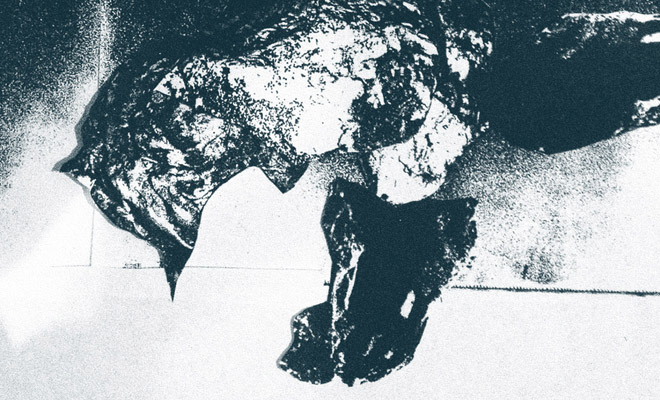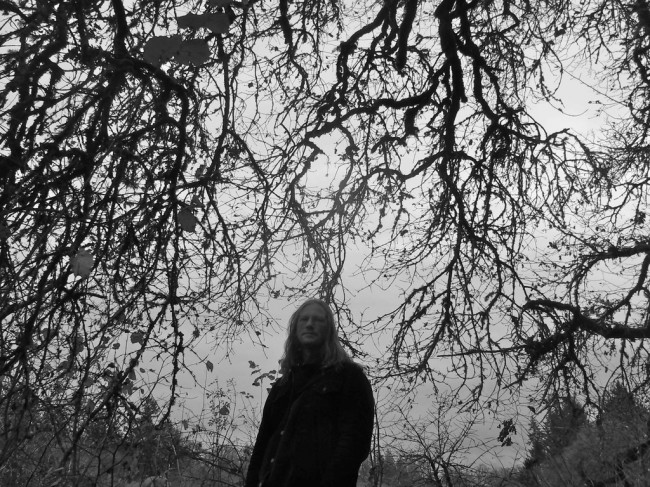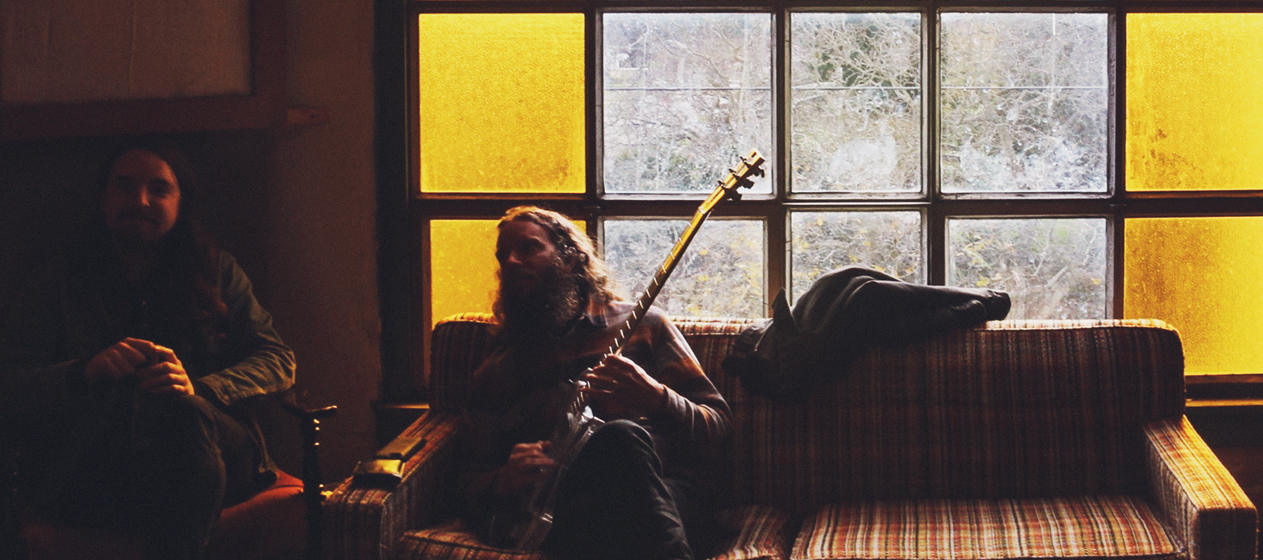Pick up the William Fowler Collins/Daniel Menche split here via SIGE Records.
WFC: How did you find the Jean Paul text we used for inspiration for this split?
DM: It all started by stumbling on this odd extract from the brilliant blog 50watts that is dedicated to amazing old book design and art. They have a page dedicated to the 1796 writings of Jean Paul’s Speech of the Dead Christ from the Universe that There Is No God.
When I first laid eyes on the text, I was rather amazed by the elegance of the horror displayed. It’s very rich with that dark cosmic existentialism. It has a very psychedelic tone to the writing as well. I’ve known about this text for some time, and just this minute I re-read it and have a whole wider perspective of the text now, because just this weekend I finally watched for the very first time the movie 2001: a Space Odyssey. I saw this movie on the biggest screen with the best sound, and yes, that movie blew me away. Again, never seen this movie before, and shocking myself, why I never have seen it before, and then slumbered into a brief depression realizing I saw the crappy Gravity movie BEFORE seeing 2001: Space Odyssey…oh the shame!
Anyway, now I’m reflecting on this Kubrick sci-fi movie and this text from Jean Paul’s dream sequence, with Christ trying to find his father – it has a certain connection of sorts. In short, the pursuit of mankind in going into the cosmos to find something “bigger” and discovering something not at all what was being sought after…rather, a vast unknown of horror. The great Japanese author Yasunari Kawabata wrote in one of his short stories, “Because you cannot see him, God is everywhere.” Yasunari Kawabata was not a Christian at all, but this is a good summery of sorts of the foolishness in mankind’s pursuit of the big divine. In Jean Paul’s dream sequence, he portrays the pursuit of the father (God), then the horror of not finding him and knowing that the people killed his father (God). We are indeed silly humans, always with that strange pursuit to seek beyond the beyond, whereas the animal kingdom simply seeks food and survival.
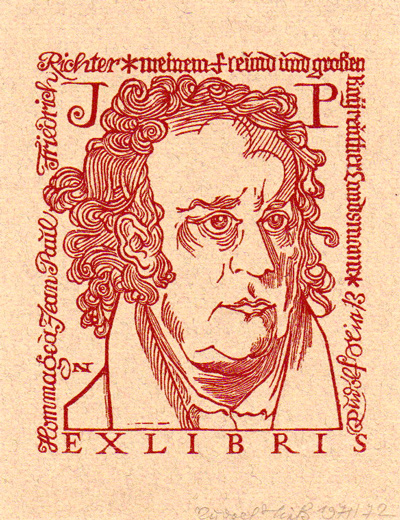
Now back to the Jean Paul’s story “Speech of the Dead Christ” – what fascinates me about this story is that it comes across as a blasphemy or heretical story, and yet Jean Paul was a devout Christian. If this was written by a devout atheist or anti-Christian, it wouldn’t have its tone of doom-laden horror the same way. Kierkegaard’s book Fear and Trembling is one side of the coin for the other side of Nietzsche’s Antichrist. Both on the same coin, but they need each other. Kierkegaard was a Christian, as maybe you know, but an interesting and very cutting edge type of Christian. His criticism of Christianity has as much potent venom as Nietzsche’s, and yet there is still this much-needed doom and gloom despair present in describing the eternal search for the so called Father (God).
All this makes this whole idea of searching for divine and realizing it’s been killed very…Metal…ya know what I mean? After all, Metal is a byproduct of depressing Christianity. Just ask Ozzy or Iommi. Or you can just listen to SLAYER with the knowledge that Tom Arya is a full-on Catholic Christian…which fascinates me to no end. I love that SLAYER has that odd twist in them, and there’s that divide with the other band members. Oddly, I really like that album God Hates Us All, and I read an interview about how difficult it was for Tom Arya to sing all the lyrics, which he did NOT write, but rather Jeff Hanneman and Kerry King did. Maybe they wrote those lyrics just to annoy their Christian bandmate singer? I don’t know, but that album has a wider WTF-ness to it. Certainly there are some seriously corny teen-angst lyrics on that album, but it’s clear there is that dark, Christian horror vibe again. Tom Araya and Jean Paul have the same thing going on. The Jean Paul text reads like 17th century Slayer lyrics. I was inspired by the tone and feeling of Jean Paul’s text, and my composition for this split has that beginning “launch,” like starting to fly and rise up to the sky or heavens, and the music starts to get really massive and huge until it breaks up and falls apart back down to the ground. I love it when noise has the feeling of rising up to the heavens and it all becomes one big hell. The beautiful “rise” and the violent “fall”…ya know – the good things in life!
WFC: There is so much rich visual imagery in the text. The opening paragraph lured me right into working with the text:
“I traversed the worlds, I ascended into the suns, and soared with the Milky Ways through the wastes of heaven; but there is no God. I descended to the last reaches of the shadows of Being, and I looked into the chasm and cried: ‘Father, where art thou?’ But I heard only the eternal storm ruled by none, and the shimmering rainbow of essence stood without sun to create it, trickling above the abyss. And when I raised my eyes to the boundless world for the divine eye, it stared at me from an empty bottomless socket; and Eternity lay on Chaos and gnawed it and ruminated itself. –Shriek on, discords, rend the shadows; for He is not!”
Ascending suns, traversing worlds, shrieks, shadows, chasms and rainbows. Unbelievable imagery to work with! And yes, Jean Paul’s own horror at the discovery that there is no Father is palpable! God is such a huge topic and I won’t attempt to tackle it here, but obviously many people live in fear of a higher power. There are masses of people doing horrendous things for an unseen figure who supposedly rules over them. To me, it is both frightening and also easy to see how it can provide plenty of inspiration for the darker arts such as heavy metal!
William Fowler Collins “I Heard Only the Eternal Storm ” (Excerpts) from Daniel Menche on Vimeo.
Do you usually focus on a particular theme before you start on a piece of music?
DM: I do, and it’s really the best way for me to get inspired to work on a project. As you maybe know, I simply do not improvise. It’s not in my DNA. I like the analogy of making music like one would write calligraphy. You have to find that one word or words first, then make the singular motions to create the ultimate calligraphy. Everything has to have a distinct, targeted approach, and a theme of sorts is crucial for me to bounce off of. If one had to follow my discography through the ages, there is always some sort of theme that is abstract of sorts, but certainly something that gives the music a backbone.
The funny thing is that I have always generally avoided any and all religious tones. That Jean Paul text was so strange and haunting that it did indeed provoke me to work on music that had an overtly religious tone to it, but not at all religious, because that isn’t my game. Coincidentally, I have for several years spent a lot of time at an amazing monastery in a remote town in Oregon. The Mt Angel Abbey Monastery is where I go often for the library, and strictly for the library mind you, and not at all for any religious reasons. Although, the monks there are pretty damn cool really. Hell, they even walk around smoking while they wear their big black robes. Smoking monks! I mean, I hate smoking, but if it’s a monk smoking then I’ll give them a pass. Reminds me a bit that Black Sabbath album cover “Heaven and Hell”. Well anyway, this monastery has one of the most eccentric and unusual libraries, with seriously some of the weirdest books. I love going there for the library and just chilling out on the monastery grounds. It’s on top of a big huge hill above Mt Angel, Oregon, and the view is amazing! One day I was there and I heard the massive pipe organ playing from the main cathedral, so I went in to check out the sounds, and there was a monk practicing on the organ. It was really sloppy and inelegant playing. He was playing different key sections at a time. Just the bass for a while, then the highs and so forth. Well lucky me, I had my Zoom digital recorder and recorded a bunch of sloppy monk organ music…nice! I took those recordings and made a lot of drones out of them, and the whole piece of music was built from there. Come to think of it, I should probably give some of the monks a copy of this record!
WFC: Your time at the monastery sounds great.
I actually never work with a specific theme when I am creating a new body of work, so this was a rare experience for me. I will start my process by way of improvising, but everything after that is shaped through editing and mixing and overdubbing. The exploratory stage is quite improvisational for me, and I love that the road is not yet laid out ahead of me when begin I working on a new piece. By the time I finish, however, there is little evidence of anything improvisational as intention takes over.
Have you ever seen Tibetan monks chant? I saw some a few years ago here in New Mexico and found it very powerful. I have a CD called Tibetan Tantric Choir which is amazing. I don’t purposely seek out religious music myself, but I did find my way to Bach’s St. John Passion through watching Tarkovsky’s films. Apparently he was a Bach fanatic. The soundtracks by Eduard Artemyev for Solaris and Stalker are fantastic. I find his movies to be like dreams. I recommend watching all of them if you haven’t already.
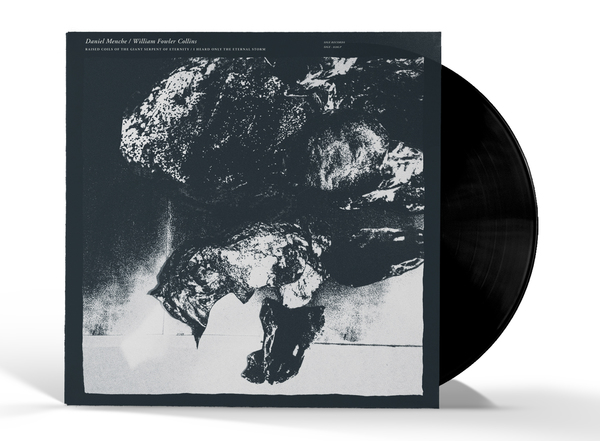
Does film influence your work?
DM: I am indeed a huge film lover, and especially soundtracks. Bela Tarr’s Satantango had quite the effect on me when I saw it on the large theater screen for the whole 7 hours length. Not sure if that influenced my music, but it did certainly influence me to get a camera and start making my own black and white photos. But for music…not really influenced by film, because I strive to have my music come from abstract inspirations. Abstract meaning something undefinable. A feeling or an atmosphere is the ideal influence.
Certainly, there have been many times that I see films and am greatly jealous of the soundtrack. I really wish I could make soundtracks for films. I’m always looking for that opportunity, in which very few have come my way. (Hollywood, are you reading this? Just kidding…sort of). My favorite soundtrack of all time is for Once upon a time in the West by Ennio Morricone. I loved that soundtrack so much and have played it countless times, and the funniest thing is that I have never seen the movie! For well over 20 years, that soundtrack has been cherished by me, but I’m still waiting to see this film in the largest cinema possible.
Another soundtrack for a movie that I really really, really love is for Valhalla Rising by Nicolas Winding Refn. That movie was just pure bliss for me when I saw it on the big cinema with loud sound. The imagery and the music and especially the silence in that movie are just so profound. For cinema or photography, there are facial landscapes and then there are nature landscapes. One can gravitate towards the human face and get inspired or influenced, but for me, it’s really about big gigantic landscapes of nature. Huge, widescreen landscapes of mountains or forests can really inspire me. One example is an Australian horror movie called Wolf Creek. Ok, I really did not like that movie at all for the human characters and story line. Absolutely did not care or like it, right. But there were a lot of these awesome landscape shots in the movie of the outback, and it was remarkable and very experimental. The soundtrack to Wolf Creek is awesome! I was thinking when seeing that movie in the theater how amazing it would be to edit only the nature landscape scenes from Wolf Creek along with the music, and it would be the greatest landscape experimental film. I have a few movies with grand landscapes of mountains that I suppose inspire me a bit. But of course, I hike a lot here in the Northwest and see a lot of landscapes with my own eyes, so that’s where much of my influence comes from. I prefer real experiences more than cinema experiences, but it’s true. Given the choice, the real stuff is the real deal for me.
WFC: I would love to create music for the right film. I believe that what I take from film, other than any subconscious influence that might be revealed in my work, are the story arcs, the edits and transitions between scenes, the shots and cinematography and of course the characters. I wouldn’t say that a film in its entirety influences my work, but certainly some elements of the film might be sources of inspiration. Watching film is definitely part of my creative process at this point. Even though my work is non-linear and doesn’t usually subscribe to a particular narrative, I do attempt to suggest some sort of storyline within the overall form of an album or even within an individual piece. I sometimes think of my compositions as being related to “scenes” or “chapters” rather than musical compositions.
Getting back to the text, I found that the thought of Christ in outer space was intriguing and it definitely brought to mind some of the moments in Kubrick’s 2001: A Space Odyssey. I love the use of Ligeti’s music in that film. Kubrick was so good at placing music in his films. I might not have discovered Penderecki if it hadn’t been for The Shining. The fact that the Penderecki music in that film was written independently as opposed to being scored specifically for the film gives one a gives a sense of how heavy the music is on its own. Heavier than most of the metal I’ve come across, that’s for certain!
Another soundtrack that struck me recently was Takemitsu’s score for Woman in the Dunes, a film by Hiroshi Teshigahara. I love Morricone’s work as well and in some cases his music is better than the film itself! Lalo Schifrin’s score for The Amityville Horror is great (as are many of his scores). You owe it to yourself to see Once Upon A Time in the West. Grab some good headphones and watch it until the big screen version comes to town! That’s a film where sound, in addition to the music, plays a huge role. The sound design is excellent. Wind machines, the sound of cowboy boots drenched in reverb. Amazing. David Lynch does great things with sound in his films as well. Blue Velvet comes to mind first, but there are other examples in his work without a doubt. Even within the horrific nightmare that is The Texas Chainsaw Massacre, there is brilliant original sound that was created by Wayne Bell and Tobe Hooper. There are downloads of that are out there if you go digging.
I know what you mean about being inspired by nature. Living in New Mexico, I cannot escape the vast landscape. I live amongst harsh desert terrain, volcanoes, mountains, apocalyptic fires, scorpions, black widows, tarantulas, rattlesnakes, coyotes, raptors, and drought. The dramatic open space and sparse population are wonderful aspects the state. I recall feeling as if I were driving on the bottom of the ocean when I first moved here. There’s also the dark history of genocide that of course isn’t unique to New Mexico, and we still have the black plague. Since I began making music here, the comparisons with this place have been constant. It isn’t a conscious effort on my part, but New Mexico seems to reveal itself in my work time and time again.

DM: I think one of the many subtle reasons in choosing to do a split with you is because I clearly can hear/see how the environment around you influences your work. I mean, your work “sounds” like an apocalyptic desert. Whereas my work is very far from that, with my surroundings being big mountains, forests, rain rain rain and more rain…and of course I live in an urban city as well. I felt that this could make for a good contrast of sorts for a split. Two totally different environmental settings that distinguish us, but with this Jean Paul text to inspire the music.
But in all, I believe that natural and urban environment is key to the influence of art and music. We are all guilty of regurgitating our record collection or cinema viewing as our source of artistic inspiration…For some, a hell of a lot of vomiting, and for few, very little cultural regurgitation. We’re all guilty of this. Eating culture and vomiting it back up and calling it our art…yadda yadda yadda…Sure, we’re all guilty of this, even when we really don’t want to admit it. But the big, big, big, main influence/inspiration for art is environment. There are very distinct differences in music that come from environments that are hot or cold, dry or wet, urban or rural. How about the role in the three main monotheistic religions that they were conceived in deserts?!?! Abraham, Jesus and Muhammad all got their kicks in the desert. Was it the minimalism of the landscapes? The sound of the winds blowing in the dunes interpreted as the voice of God? Dehydration? Starvation? I tell ya, deserts are not at all my song and dance! I’m a forest and mountain type of guy. The Redwood forest in Northern California is my favorite place in the world. As soon as I step foot in there, I am at my happiest and most peaceful. All those big trees blasting out pure oxygen…oh man, that’s my heaven right there!
Deserts are cool, but they scare me a bit……Scorpions! Snakes! Heat! Dehydration!!! Yikes!!!!! You know what would be really fucking cool? If we followed up this split LP with ourselves starring in a remake of the movie Ishtar! That shit would rule! I’ll be the Dustin Hoffman character and you’ll be the Warren Beatty role, and we both rollick around the desert entertaining unsuspecting victims with our comedic musical hijinks! Whatcha say? You on? We’re going to Ishtar the fucking world!
WFC: The desert builds character. If the Ishtar thing doesn’t get off the ground, maybe we can be featured on a future episode of Portlandia instead? You and I browsing titles in the feminist bookstore?
Until then, I’ll leave you with this scene from No Country for Old Men:

